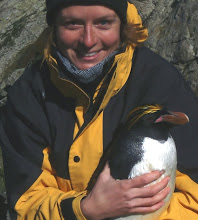
This is why they call it Tern Island.
Someone told me that white terns used to be called fairy terns but the name was changed because of the non-PC overtones of the word 'fairy'. I'm not sure this is true- surely the pink fairy armadillo would have received the same treatment by now if it were. Fairy tern seems much more appropriate for these charming little birds, which like to flutter around your head and have a really good look at you while you frantically try to snap photos of them.

Politically correct- a white tern.

This white tern caught a little fishy.
Like many seabirds, white terns have dispensed with all that silly nest-building nonsense and instead will lay their single, speckled egg in any spot where it will not immediately roll off. This might be in the forked branch of a bush or an appropriately positioned knot hole, but many white terns on Tern Island favour the barracks, where a narrow lip of concrete running round the edge of the building provides the perfect nursing ground for baby terns.

A white tern egg on the barracks wall.
Now if you thought the albatross chicks were cute then hold onto your hats- if Channel 4 ever made a TV show called 'The 100 Greatest Cute Baby Animals Ever' then white tern chicks would be in the number 1 spot every time. These tiny, speckled fluffballs hatch out onto their bare branch or concrete shelf and basically spend their first few weeks clinging on for dear life. As a result they have evolved disproportionately large feet. You could probably fit six or seven day-old white tern chicks comfortably into the palm of your hand, and together they would be cute enough to kill most average women at a distance of 50 paces.

All kinds of cute- a white tern chick.

Here's one next to a quarter (about the size of a 10p) for scale.

Pretty soon they turn into scruffy teenagers.
Grey-backed terns are rather noisier than white terns and for a while there was a group of them that liked to have a shrieking competition outside my bedroom window at about 3am every night. Grey-backed terns lay their eggs on the ground, preferring sandy and gravelly areas. Their eggs have sandy and gravelly coloured shells, making them practically invisible. When approached, grey-backed terns will abandon their egg and start running around in front of you, squawking and flapping their wings, to try and distract you from the whereabouts of the egg. This tactic works very well, so for large and clumsy humans like myself, walking through grey-backed tern nesting areas is a nerve-wracking experience.

A grey-backed tern.

A grey-backed tern chick doing a passable impression of a rock.

Grey-back in flight.
In terms of noise production, though, sooty terns are the hands down winners. Initially the sooties gather in flocks above the island- first a few, then hundreds, then thousands, then tens of thousands of terns which form an enormous, boiling cloud in the sky with every bird screeching at every other bird. Over the course of a few weeks the tern cloud gets gradually closer and closer to the ground until eventually terns begin to land.The cloud seems to concentrate over a particular section of the island and for a few days the ground in this section and the air above it will be thick with terns, all in constant motion and constant vocal contact with one another. The noise produced is deafening, and reminiscent of an angry football crowd in a stadium. At some unknown signal, all the terns in a particular area will simultaneously lay their eggs, and then the tern cloud moves on to another part of the island leaving behind it a dense carpet of incubating birds. It is as though some giant invisible machine is systematically covering the island with a layer of sooty tern nests in the most efficient pattern possible.

A sooty tern.

Sooties on the wing.

This albatross chick is wondering why it suddenly got so noisy.
Sooty tern eggs are just as well camouflaged as grey-backed tern eggs, but instead of there being one or two eggs concealed on the ground where you want to walk there are thousands of eggs concealed on the ground where you want to walk. Walking through the colony ellicits a most indignant response from its occupants. The terns on the ground peck your feet, the ones in the air peck your head, and all of them scream obscenities at you until your ears bleed.The terns now cover almost every inch of the island and have recently surrounded the barracks, where they pay no heed to silly human conventions such as shutting up and going to sleep at night time. Slowly I can feel my sanity begin to seep away.

Walking through the terns can be tricky.

That brown lump next to the tern is its chick.

This tern took exception to being photographed.


No comments:
Post a Comment